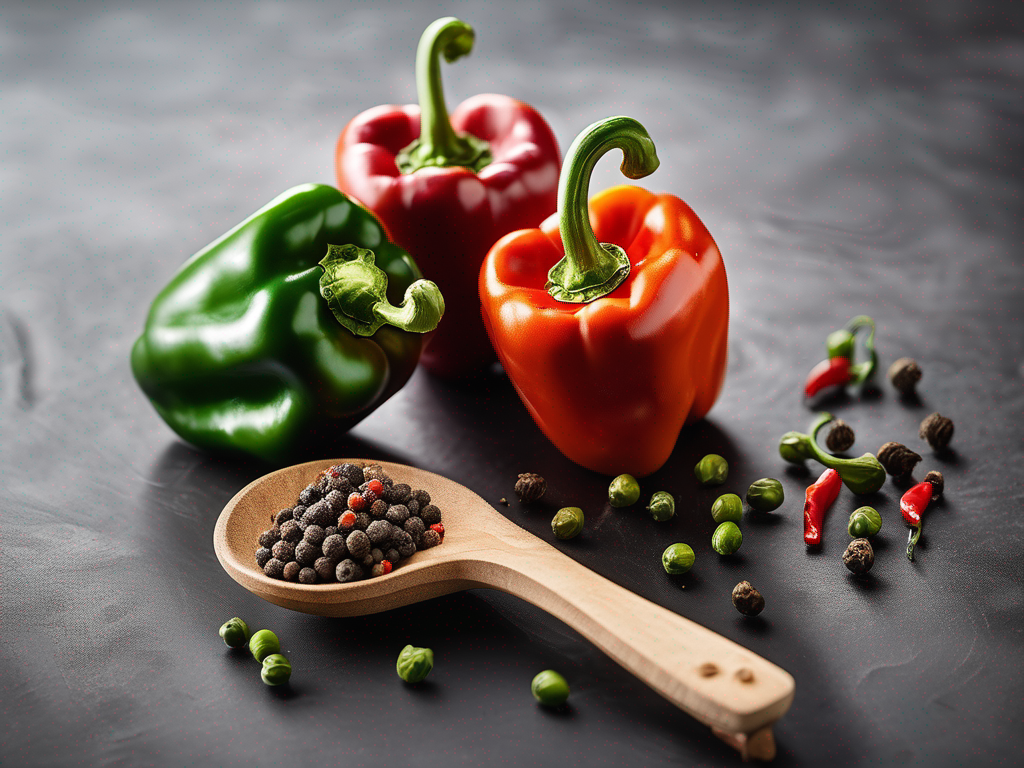
The Best Way to Store Pepper to Extend Its Shelf Life
Get Your Free Food Safety Cheat Sheet
30 most common foods with instant answers. Print it and stick it on your fridge—completely free!
The Best Way to Store Pepper to Extend Its Shelf Life
Pepper is a versatile spice that adds flavor and depth to a wide range of dishes. Whether you prefer black pepper, white pepper, or a specialty variety like Sichuan pepper, proper storage is key to maintaining its freshness and flavor. In this blog post, we will explore the best practices for storing pepper to extend its shelf life and ensure that you get the most out of this essential spice. (Pepper)
Why Proper Storage Matters for Pepper
Proper storage is essential for preserving the quality of pepper and preventing it from losing its flavor and potency. When exposed to air, light, heat, and moisture, pepper can degrade more quickly, leading to a loss of flavor and aroma. By following the correct storage guidelines, you can ensure that your pepper remains fresh and flavorful for longer.
Factors That Affect Pepper's Shelf Life
Several factors can impact the shelf life of pepper, including:
- Exposure to air
- Exposure to light
- Exposure to heat
- Exposure to moisture
By understanding how these factors can affect the quality of your pepper, you can take steps to mitigate their impact and prolong the shelf life of this essential spice.
The Best Way to Store Pepper
To extend the shelf life of your pepper and preserve its flavor, follow these best practices for storage:
-
Store in an Airtight Container: Transfer your pepper to an airtight container to protect it from exposure to air, which can cause it to lose its flavor and aroma.
-
Keep Away from Light: Store your pepper in a dark, cool place away from direct sunlight to prevent light exposure, which can degrade the quality of the spice.
-
Avoid Heat: Keep your pepper away from heat sources such as stoves, ovens, and direct sunlight, as heat can accelerate the loss of flavor and potency.
-
Protect from Moisture: Ensure that your pepper is stored in a dry environment to prevent moisture from causing it to clump or develop mold.
-
Consider Whole vs. Ground Pepper: Whole peppercorns tend to retain their flavor and aroma longer than ground pepper. If possible, consider buying whole peppercorns and grinding them as needed for the freshest flavor.
-
Label and Date: To keep track of when you purchased the pepper and ensure freshness, label the container with the date of purchase.
-
Avoid Refrigeration: While some spices benefit from refrigeration, pepper is best stored at room temperature in a dark, dry place.
Tips for Maintaining Pepper's Freshness
In addition to proper storage, consider the following tips to maintain the freshness of your pepper:
- Grind as Needed: For the freshest flavor, grind your pepper as needed rather than purchasing pre-ground pepper.
- Buy in Small Batches: To ensure that you use your pepper before it loses its flavor, consider buying smaller quantities at a time.
- Check for Freshness: Check your pepper for signs of degradation, such as loss of aroma or flavor, and replace it as needed.
Conclusion
By following these guidelines for storing pepper, you can extend its shelf life and ensure that it remains fresh, flavorful, and aromatic for longer. Proper storage in an airtight container, away from light, heat, and moisture, is key to preserving the quality of this essential spice. By taking the time to store your pepper correctly, you can enhance the flavor of your dishes and make the most of this versatile ingredient.
Remember, the quality of your ingredients can significantly impact the outcome of your culinary creations. So, next time you reach for that jar of pepper, take a moment to consider how you can store it properly to maximize its flavor and shelf life.
For more information on pepper and other food storage tips, stay tuned for our upcoming blog posts! (Pepper)
Related Posts
Here are some other articles you might find helpful:
- Making the Most of Leftover Cooked Homemade Lentils: Tips for Storage and Usage
- Making the Most of Leftover Cooked Split Peas: Practical Tips to Avoid Food Waste
- Easy Tips for Reusing Cooked Bacon Leftovers in New Recipes
- Expert Tips for Repurposing Cooked Breakfast Sausage Leftovers
- Making the Most of Excess Common Sage: Tips for Storage and Usage
Authoritative Food Safety References
These agencies and university labs inform every tip and health precaution we publish.
USDA FoodKeeper – Cold Storage Guidelines
Official refrigerator, freezer, and pantry timelines maintained by the U.S. Department of Agriculture.
Visit USDA FoodKeeperFDA Produce Safety Rule & Grower Guidance
Field-to-fridge handling practices that prevent contamination of fruits, vegetables, and leafy greens.
Visit FDA Produce SafetyCDC Foodborne Illness Prevention Hub
Surveillance-backed guidance on pathogens, symptoms, and steps to reduce foodborne illness risk.
Visit CDC Food SafetyUC Davis Postharvest Technology Center
University research detailing optimal storage atmospheres for produce after harvest.
Visit UC Davis PostharvestPenn State Extension – Home Food Preservation & Safety
Peer-reviewed extension bulletins on safe canning, chilling, and reheating practices.
Visit Penn State ExtensionGet Your Free Food Safety Cheat Sheet
30 most common foods with instant answers. Print it and stick it on your fridge—completely free! Want more? Upgrade to the complete guide with 70+ foods.
Scan your food directly and get instant safety info using our AI-powered camera feature.